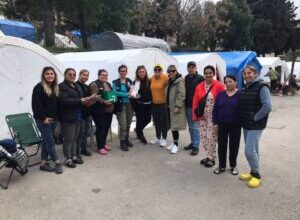
A flight carrying 140 stranded migrants departed from Aden International Airport for Addis Ababa. This was the first flight to Ethiopia from Yemen under the International Organization for Migration (IOM)’s Voluntary Humanitarian Return (VHR) programme since the COVID-19 global pandemic was declared.
“This flight is a vital lifeline for migrants who have been stranded for months on end in unsafe conditions,” said António Vitorino, IOM Director General. “In the coming months, we hope to see more migrants able to safely go home to their loved ones in this way.”
Despite a reduction in the number of migrants arriving in Yemen — from 138,000 in 2019 to just over 37,500 in 2020 — the dangers they face have drastically increased over the past year. Unable to continue across Yemen to the Kingdom of Saudi Arabia (KSA), many stranded migrants lack shelter, water and food. Migrants also have been at increasing risk of experiencing xenophobia, exploitation and detention over the last year.
“I have a family to provide for in Ethiopia so I left to find work,” said Mohammed, a 25-year-old man travelling on the return flight.
“I came to Yemen to make it to Saudi Arabia, but I was not successful. I can’t describe my situation here, as it has been very difficult. I have been homeless and poor. I am happy to be going home but I have nothing to bring back to my family. I will never leave again,” he added.
Transiting through Yemen was already a perilous undertaking even before COVID-19. Migrants first travel through the scorching deserts of the Horn of Africa and then cross the Gulf of Aden in boats so cramped that passengers often die of asphyxiation.
In Yemen, they are exposed to kidnapping, torture and abuse, while navigating a deadly conflict. While men comprise the majority of people travelling on this route, women and children remain the most vulnerable.
Since the start of the pandemic, IOM’s Displacement Tracking Matrix reports that at least 9,000 people have become desperate enough to put their lives back in the hands of smugglers to return to the Horn of Africa on dangerous boat journeys.
Smuggling networks that operate along this route across the Gulf sometimes force migrants off overcrowded boats. Earlier this month, IOM reported that 20 migrants lost their lives in such an incident.
Since 2020, IOM teams in Aden registered over 6,000 migrants expressing a wish to return to Ethiopia. In December, the Government of Ethiopia visited the ancient coastal city and verified the nationality of 1,100 people, the first step of the voluntary returns process. The remaining migrants from this group are expected to travel in coming weeks. Additionally, thousands of other migrants remain stranded elsewhere in Yemen, including Ma’rib, where IOM hopes to extend its returns efforts soon.
Source: IOM







